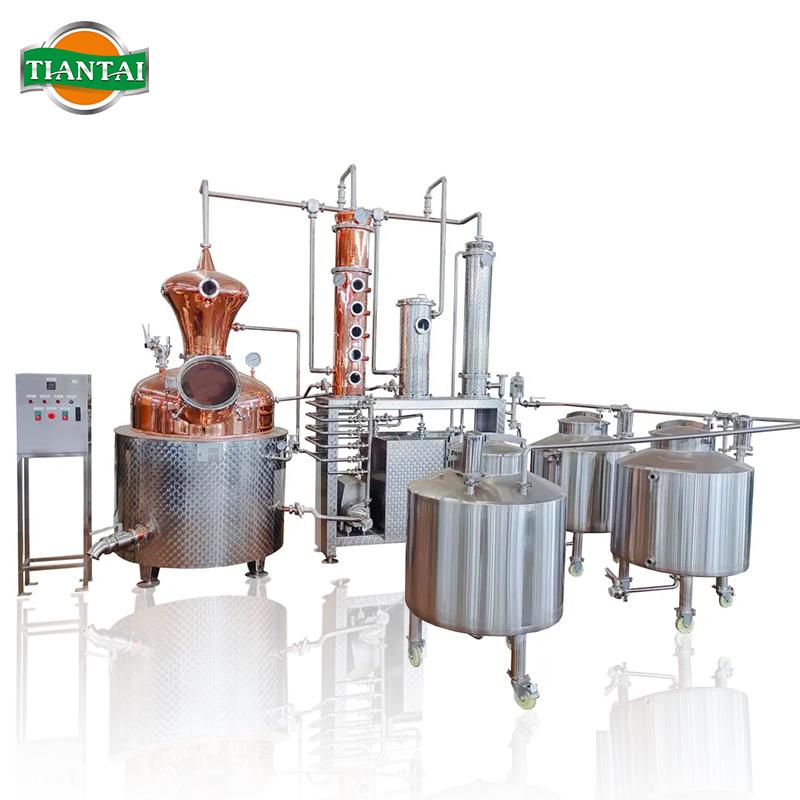Step-by-Step Guide to Commercial Vodka Production
1. Regulations and Licensing
Research Local Regulations: Understand the local, state, and federal regulations governing the production and sale of alcoholic beverages.
Obtain Necessary Permits: Apply for the necessary permits and licenses, including those for alcohol production, distribution, and sales.
Compliance: Ensure your facility complies with health, safety, and environmental standards.
2. Facility and Equipment
- Facility: Secure a suitable facility that meets all regulatory requirements. This includes areas for mashing, fermenting, distilling, aging (if applicable), and bottling.
- Mash Tun: For mixing and cooking the mash.
- Fermentation Tanks: Stainless steel or food-grade plastic tanks to ferment the mash.
- Distillation Equipment: Copper or stainless steel stills (pot stills or column stills) for distilling the alcohol.
- Filtration Systems: Charcoal or other filtration systems to purify the vodka.
- Bottling Line: Automated bottling, capping, and labeling machines for efficient production.

3. Ingredients
- Base Ingredient: Common base ingredients include grains (corn, rye, wheat), potatoes, or even fruits. Choose high-quality raw materials.
- Water: Pure, filtered water is essential for both the mash and diluting the final product.
- Yeast: Specific yeast strains designed for alcohol production to ensure efficient fermentation.
4. Mash Preparation
- Milling: Grind the base ingredients into a fine meal.
- Mashing: Mix the meal with hot water in the mash tun to convert the starches into fermentable sugars. Maintain an appropriate temperature to activate the enzymes.
- Cooling: Cool the mash to a suitable temperature for fermentation.
5. Fermentation
- Transfer to Fermentation Tanks: Move the cooled mash to fermentation tanks.
- Add Yeast: Add yeast to the mash to start the fermentation process.
- Ferment: Allow the mash to ferment for several days, maintaining a consistent temperature. The yeast converts the sugars into alcohol and CO2.
6. Distillation
- First Distillation: Distill the fermented mash to separate the alcohol from the water and other impurities. This is usually done in a pot still or column still.
- Second Distillation: Distill the alcohol again to increase purity. Vodka is typically distilled multiple times (often three or more) to achieve the desired purity and smoothness.
- Cutting the Heads and Tails: During each distillation, separate the heads (first part) and tails (last part) from the hearts (middle part) to ensure only the purest alcohol is used.
7. Filtration
- Charcoal Filtration: Filter the distilled alcohol through activated charcoal to remove any remaining impurities and enhance the smoothness.
- Additional Filtration: Some producers use additional filtration methods (such as quartz sand, diamonds, or other materials) to further refine the vodka.
8. Dilution
- Dilute with Water: Dilute the distilled alcohol with pure, filtered water to reach the desired alcohol content (typically 40% ABV for vodka).
9. Bottling
- Bottling Line: Use an automated bottling line to fill, cap, and label the bottles.
- Quality Control: Perform rigorous quality control checks to ensure consistency and purity in each bottle.
10. Packaging and Distribution
- Labeling: Ensure labels comply with all regulatory requirements, including alcohol content and any necessary warnings.
- Packaging: Use appropriate packaging materials to protect the product during transportation and storage.
- Distribution Channels: Establish relationships with distributors, retailers, and direct-to-consumer platforms.
11. Marketing and Sales
- Branding: Develop a strong brand identity, including logo, packaging design, and marketing materials.
- Promotion: Utilize various marketing channels such as social media, events, and partnerships to promote your vodka.
- Customer Engagement: Engage with your customers through tastings, events, and other promotional activities to build brand loyalty.
Additional Considerations
- Insurance: Obtain adequate insurance coverage for your business.
- Staff Training: Train your staff in all aspects of production, safety, and quality control.
- Sustainability: Consider sustainable practices in sourcing ingredients, production processes, and packaging.
By following these steps and maintaining high standards of quality and consistency, you can successfully produce and sell vodka commercially.
Tiantai brewtech equipment supplies 100L-3000L distiller equipment, pot still distillation,used distillery equipment for sale,distillery equipment for sale for all kinds of spirits. Welcome to contact us to get good discount!
Email: [email protected]
www.brewerybeerequipment.com


.jpg)

.jpg)

Get In Touch